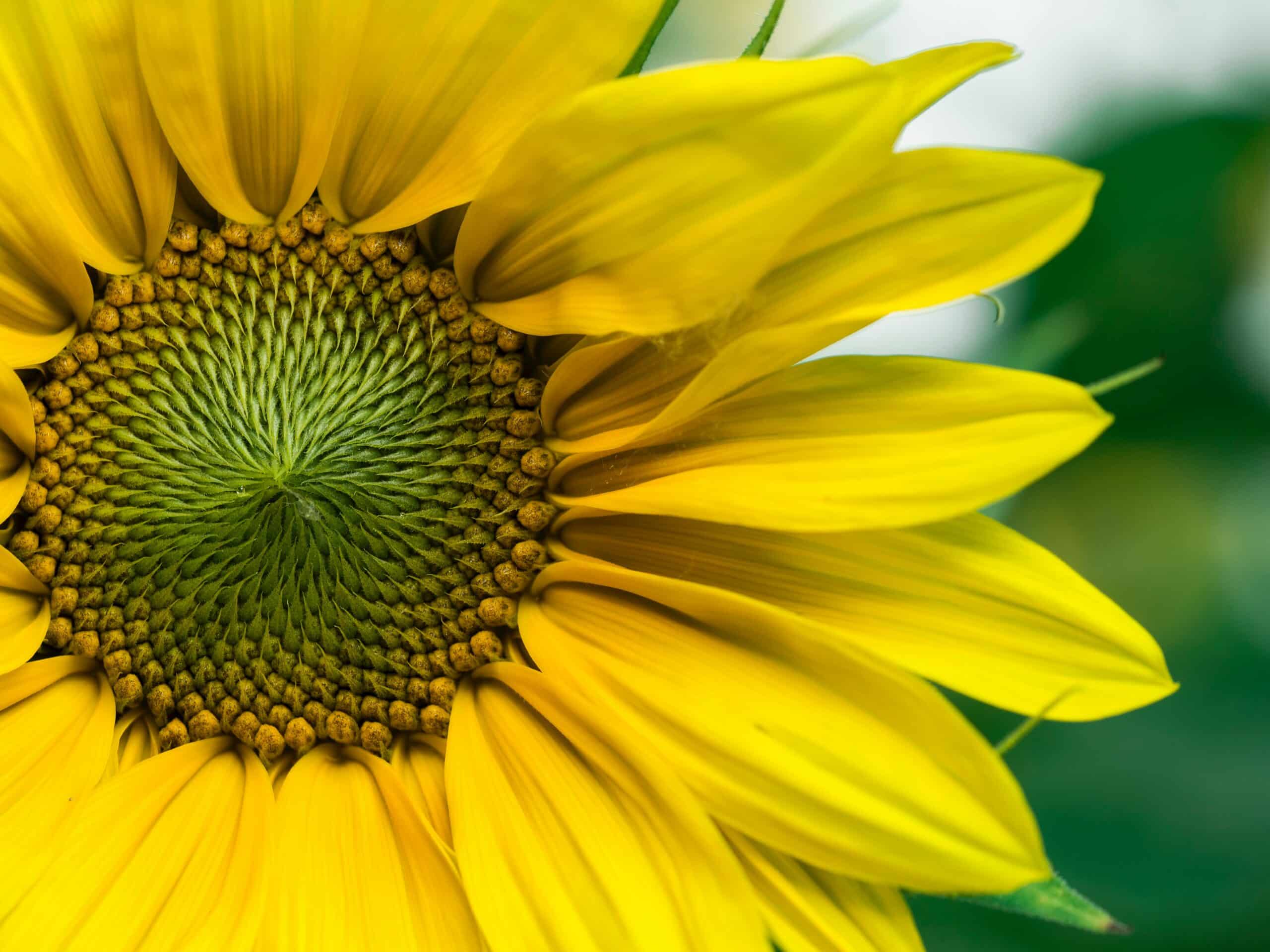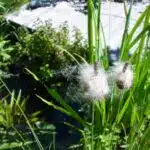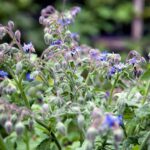Creating a beautiful garden doesn’t have to be difficult, and with zinnia flowers it can be easy! Zinnias are one of the most popular flowers for both beginning and experienced gardeners. Not only are they relatively low-maintenance, but these colorful blooms will brighten up any outdoor space.
In this article, we’ll provide an in-depth look at how to grow beautiful zinnia flowers that will bring a vibrant pop of color to your garden. We’ll start by discussing the different types of zinnias available and the best climate conditions for growing them. Then, we’ll go over tips on planting and caring for your zinnias, so they can reach their full potential.
With the right knowledge and proper care, you can cultivate an amazing display of gorgeous zinnia flowers that will leave you feeling proud and accomplished. So if you’re ready to learn more about growing these stunning blooms, read on!
Choosing The Right Variety Of Zinnia
Like a painter selecting the perfect colors for their canvas, it’s important to pick the right variety of zinnia when creating a beautiful garden. Even with the same species, there can be subtle differences in size, color, and shape that make one variety stand out among the rest.
When choosing zinnias for your garden, consider both annuals and perennials. Annuals will bloom from spring through fall and are available in an array of vibrant colors like red, yellow, purple and pink. On the other hand, perennial varieties are more likely to come back year after year and come in softer pastel hues such as white or light blue.
No matter which type you choose, make sure you pick plants suited for your climate. Zinnias do best in areas with full sun and well-draining soil – once you find the right spot for them they’ll reward you with a stunning display of petals all season long!
Selecting A Planting Site
When it comes to growing beautiful zinnia flowers, selecting the right planting site is key. Take for example, the Parry family from Michigan: they had a large garden with plenty of space for all the flowering plants they wanted to grow. After doing their research, they decided that a spot with full sun exposure was best for their zinnias and began preparing the soil in that area.
Before planting anything, it’s important to make sure your planting site has good drainage and can receive at least six hours of direct sunlight each day. If you’re looking for larger blooms or a more vibrant colour, then opt for an area that receives full sun throughout most of the day. You’ll also want to make sure the soil is well-drained and not too moist; if your soil is prone to flooding or stays wet after rainstorms, you may have better luck planting elsewhere.
To prepare your soil, start by removing any weeds or debris and loosening up the dirt with a shovel or rake. Then add some organic matter like compost or manure and work it into the dirt until it’s evenly mixed in. This will provide essential nutrients for your zinnias as they grow and help them establish strong roots. Once you’ve finished preparing the soil, you can move on to planting your zinnia seeds or seedlings in this ideal environment!
Preparing Your Soil
When it comes to planting zinnia flowers, an important step is preparing the soil in which they’ll grow. It’s essential to ensure that your soil is well-drained, rich in nutrients and free from weeds. To start, you’ll want to work some organic matter into the soil such as compost or aged manure. This will help add nutrients and create a more suitable environment for healthy root growth.
You can also use a soil test kit to determine the pH level of your soil and make adjustments if needed. The ideal pH level for growing zinnias is between 6.0 and 7.0, so if it’s too low or too high you can adjust with lime or sulfur accordingly. Additionally, you should mix in some slow-release fertilizer that’s specifically designed for flowers or vegetables before planting your zinnias.
Taking the time to properly prepare your soil will ultimately result in healthier plants with more vibrant blooms. With all this done, you’re now ready to move onto the next step: planting zinnia seeds or seedlings!
Planting Zinnia Seeds Or Seedlings
Planting zinnia seeds or seedlings is the next step in growing beautiful zinnia flowers. Depending on your climate, you can start sowing seeds outdoors from mid-spring to early summer. If you’re starting indoors, it’s best to do so four to six weeks before the last frost date.
Once you have your seeds or seedlings ready, choose an area with well-drained soil and full sun exposure. Make sure the area is weed-free and work in some compost into the soil before planting. Plant your zinnia seeds 1/4 inch deep, or 2 inches apart if you’re planting seedlings. Water carefully afterwards to keep the soil moist but not soaked.
With these steps, you’ll be on your way to a beautiful patch of zinnias. Now that they are planted, the next step is watering them properly for optimal growth and blooming.
Watering Zinnia Plants
Like a shining beacon in the dark, proper watering is essential for zinnia plants to grow and flourish. Without the right amount of hydration, these vibrant flowers will be unable to reach their full potential. Let’s take a look at how to properly water your zinnia plants.
When it comes to watering zinnia plants, consistency is key. Aim for about one inch per week in rainfall or irrigation and ensure that the soil is moist but not saturated. If you have sandy soil, you may need to water more often; if you have clay soil, you may need to water less frequently. Additionally, be sure to check your local weather forecast so you can adjust your watering schedule accordingly.
It’s important not to overwater as this can lead to root rot or other diseases. To avoid over-watering, make sure that your pots and containers are well draining and poke your finger into the soil before each watering session – if it feels dry several inches down, then it’s time for a drink! With these tips in mind, you’ll be able to provide your zinnias with just enough moisture for them to thrive.
Feeding Zinnia Plants
Zinnias are popular with gardeners around the world, with over 20 species of zinnia flowers to choose from. Although they’re relatively easy to grow, feeding zinnia plants is an important part of caring for these striking blooms. An interesting statistic is that it’s recommended to fertilize your zinnias every 2-3 weeks throughout the summer months.
When it comes to feeding your zinnias, a water-soluble fertilizer is usually best. You’ll want to look for one that’s formulated for flowers, and make sure you dilute the solution according to package instructions before applying it. It’s also important not to over-fertilize; too much fertilizer can cause plants to produce more foliage than blooms and can even lead to nutrient burn.
Once you’ve applied the fertilizer, give your zinnias a good drink of water so that the nutrients can be absorbed into the soil. This will help ensure that your plants get all the nutrients they need as they continue growing and producing beautiful blooms throughout the season. To keep them looking their best, don’t forget about deadheading them regularly as well!
Deadheading Zinnias
Picking and pruning petals is paramount for achieving beautiful zinnia blossoms. Deadheading, or removing spent blooms, is a key part of the process for preserving plant growth. With a little bit of care, zinnias can be kept looking vibrant and seasonal.
Deadheading zinnias is an easy task that requires no extra tools or equipment. All it takes is some simple snipping with garden shears to remove any wilted flowers from their stems. This promotes new blooms and keeps the plant healthy as well as aesthetically pleasing. Be sure to check plants regularly throughout the season so that spent blooms don’t have time to reseed themselves in the soil and take over your garden beds.
It’s important to practice deadheading regularly if you want your zinnias to look their best. With this simple technique, you can enjoy plenty of beautiful blooms throughout the season and keep your garden looking tidy and inviting. Now that we’ve discussed deadheading, let’s move onto controlling weeds and pests in order to ensure healthy plant growth.
Controlling Weeds And Pests
Weeds and pests are a common nuisance for gardeners, as they can quickly take over a flower bed if not properly managed. According to recent statistics, it is estimated that over 25% of homeowners spend more than $50 on pest control annually. To ensure the success of zinnia flowers, gardeners should take the necessary steps to prevent weeds and pests from overrunning their garden.
One effective way for controlling weeds is to apply pre-emergent herbicides, which stops small seedlings from germinating. Furthermore, mulching with straw or grass clippings can help reduce the number of weed seeds in the soil. Additionally, hand weeding is always an option if you need to remove existing weeds or those missed by the herbicide application.
To keep insects away from your zinnias, be sure to check them frequently for signs of damage such as eaten leaves or holes in petals. If you notice any damage caused by pests or disease, treating with pesticides should be done immediately before it spreads throughout the entire plant. In addition, providing adequate water and nutrition will also help make your plants less attractive to bugs and diseases. With these methods in place, you’ll be able to maintain a healthy zinnia flowerbed without any problems from weeds or pests.
With proper care and maintenance, beautiful zinnia flowers can thrive in any garden. Staking taller varieties can help keep them upright and prevent them from sprawling out too far – but that’s another topic for another day!
Staking Taller Varieties
It is often assumed that the best way to grow beautiful zinnia flowers is to let them thrive naturally. However, staking taller varieties can be a great way to ensure they achieve their full potential in terms of growth and vibrancy. To explore this theory further, let’s look at how staking can benefit zinnia flowers.
Staking taller varieties of zinnia flowers helps them stay upright during times of heavy rain and wind. This allows for better sunlight absorption which helps the flowers develop their vibrant colors and blooms. It also prevents the stems from breaking due to the weight of flower heads or from strong winds. Staking also provides support for stems when plants become top-heavy from too many blooms, preventing them from drooping over or toppling over altogether.
But perhaps most importantly, staking tall varieties of zinnia flowers can help them reach their full height potential as it provides stability and balance throughout their growth cycle. This means that gardeners can enjoy a longer flowering period as well as more impressive displays in the garden! With these benefits in mind, it’s clear why staking tall varieties of zinnia flowers is an important part of growing healthy plants that will bring beauty to any garden setting. And with a bit of extra care, these stunning blooms will add color and life to any outdoor space all season long! Now that we know how important it is to stake tall varieties of zinnia flowers, let’s move on to discuss how you can winterize these plants for optimal health next season and beyond.
Winterizing Zinnia Plants
What happens when the weather turns cold? Do your zinnias still thrive or do they succumb to the elements? If you’re looking for a way to keep your zinnia plants beautiful and healthy through winter, read on. This guide will teach you how to winterize zinnia plants so that they may bloom again in spring.
The first step is to prepare your zinnia beds for winter. Cut back the stems of dead flowers and remove any debris or weeds from the soil. When temperatures drop, mulch around the base of each plant with two to three inches of hay, wood chips, or straw. This will help protect plants’ roots from freezing temperatures.
In addition, you can use row covers to protect any new shoots from frost damage. Place them over your plants before nightfall and remove them during the day so that the sun can reach your plants. With these precautions taken, you can ensure that your zinnias will be ready for blooming in springtime!
Common Diseases Of Zinnias
Unfortunately, zinnias can be susceptible to certain diseases and pests. Common ones include leaf spots, powdery mildew, and rust. Leaf spots occur when temperatures are too high or when zinnias have been over-watered or exposed to excessive humidity. Powdery mildew is a fungus that may appear during hot, humid weather and will cause the leaves to become spotted with white patches. Rust appears as orange-red bumps on the undersides of the leaves and can be caused by warm temperatures coupled with wet conditions.
In order to prevent these diseases, it’s important to keep your zinnia plants well-maintained and free from debris. Make sure you water them regularly but not excessively so that the soil doesn’t become soggy. Additionally, you should avoid overcrowding your plants and make sure they get adequate air circulation. If you notice any signs of disease, you should act quickly by removing affected leaves or using a fungicide spray to treat the problem before it spreads further.
It’s also worth noting that some varieties of zinnias are more disease resistant than others. So if you’re looking for a healthier option for your garden, consider choosing one of these varieties before planting them in your yard. Now let’s look at how we can use zinnias to attract pollinators like bees and butterflies into our gardens.
Attracting Pollinators With Zinnias
Growing beautiful zinnias can be a rewarding experience. But in order to get the most out of these gorgeous flowers, it’s important to attract pollinators. Thankfully, this isn’t difficult!
First off, you’ll want to make sure that you’re planting your zinnias in areas with plenty of sunlight and good soil drainage. This will help them to grow strong and healthy. Additionally, try planting different varieties of zinnias together. This will give them more variety for pollinators to choose from.
Finally, don’t forget about regular maintenance! Deadheading spent blooms is a great way to encourage new growth and keep your garden looking its best. Plus, it’s an excellent way to ensure that your zinnias are getting the nutrients they need so they can attract more pollinators throughout the season! With these tips in mind, you’ll be able to bring a bounty of beautiful bees and butterflies into your garden in no time.
Propagating Zinnias
Propagating zinnias is like painting a masterpiece – it takes time and dedication to get the job done. It’s important to understand how to properly care for them in order to get the best results. To propagate zinnias, start by planting seeds indoors. Use seed-starting trays filled with potting soil and place the seeds about one-quarter inch below the surface. Keep the soil moist and give them lots of direct sunlight. After four to six weeks, you’ll be able to transplant your zinnias outdoors when all risk of frost has passed.
When caring for your outdoor plants, make sure they’re planted in well-draining soil that’s amended with compost or fertilizer every few weeks. Provide plenty of water, but don’t overwater as this can cause root rot and other diseases. If possible, add a layer of mulch around each plant to help retain moisture and keep weeds away. Once the flowers have bloomed and started to die off, cut them back so they can rebloom again later in the season.
With proper care and attention, your zinnia flowers will grow beautifully in no time at all! Growing these colorful blooms is a rewarding experience that’s sure to bring joy throughout the summer months. Now that you know how to propagate zinnias, let’s take a look at how you can use them in cut flower arrangements for an added touch of beauty in your home or garden.
Using Zinnias In Cut Flower Arrangements
Planting and propagating zinnias is only the first step towards creating beautiful cut flower arrangements. Achieving a colorful and fragrant bouquet requires careful consideration of their characteristics, such as bloom size, color, and stem length. To make the most of these gorgeous blooms, follow these tips for using zinnias in cut flower arrangements.
To begin with, pay attention to the size of the blooms when cutting them from the garden. Smaller flowers can be grouped together to create a more delicate look, while larger ones can be used as statement pieces in an arrangement. Additionally, consider how much stem length you will need for your vase or container. Some varieties of zinnia have shorter stems that may not be suitable for tall vases or bouquets.
When it comes to color selection, choose complementary colors that will work well with each other in an arrangement. Bright pinks and purples make a bold statement together, while muted oranges and yellows are great for creating a soft look. Whatever combination you choose, let your creativity shine through! Experiment with different shapes and textures for a truly show-stopping bouquet. With these simple tips, you’ll be able to use zinnia flowers to create stunningly beautiful arrangements in no time!
Armed with this knowledge on how to best use zinnia flowers in cut arrangements, it’s time to delve into the world of growing tips and tricks needed to cultivate flourishing plants year after year.
Zinnia Growing Tips And Tricks
As the warm summer breeze blows, we can imagine a picturesque garden full of vibrant colors and fragrant aromas. Zinnias, with their bright and cheery blooms, have the power to transform any space into an idyllic paradise. But how do you grow beautiful zinnia flowers? Here are 15 zinnia growing tips and tricks to help you create your own flourishing garden.
The first step is to choose the right spot. Make sure it’s in full sun and that the soil drains well. When planting your zinnias, give them enough room to spread out as they grow. Then, water them regularly and add compost or fertilizer for extra nourishment. You’ll also want to deadhead – or remove dead flowers – in order to promote new growth.
To keep your zinnias healthy, be sure to watch out for pests such as aphids or leaf miners. If you find any, treat them quickly with an appropriate pesticide or insecticide. You should also keep an eye on the weather; if there are sudden changes or extreme temperatures, take precautions to protect your plants from damage. With these simple yet effective tips in mind, you’re sure to have a stunning zinnia garden in no time!
Frequently Asked Questions
How Long Do Zinnia Plants Take To Germinate?
Growing zinnias is like planting a patch of sunshine in your garden. They come in such a variety of vibrant colors and sizes, you can easily find the perfect blend to fit your landscape. But before you can enjoy their beauty, you need to know how long it takes for zinnia plants to germinate.
Germination is the process when seeds sprout into seedlings. It’s important to understand that different types of zinnia seeds have different lengths of time for germination. Some can take as little as 7-10 days while others may take up to 28 days or more. The best way to tell if your zinnia seeds are ready to go is by keeping an eye on the soil and looking for signs of growth.
When growing zinnias, patience is key! You’ll want to make sure the soil has enough moisture so that it doesn’t dry out too quickly and that it gets plenty of sunlight each day. With these two elements in place, you should be able to see some sprouts within a few weeks’ time. There’s nothing quite like watching these flowers bloom from tiny seeds into cheerful blooms!
What Is The Best Fertilizer For Zinnia Plants?
Growing zinnia flowers to their fullest potential starts with the right fertilizer. Just like people need good nutrition, so do plants. Fertilizer provides essential nutrients that help them grow and bloom vibrantly. To ensure beautiful, healthy blossoms, it’s important to select the best type of fertilizer for zinnia plants.
It can be difficult to know which fertilizer is best for your plants. Luckily, there are a few key characteristics to look for when selecting one. Some gardeners swear by organic fertilizers like compost or fish emulsion because of their beneficial bacteria and enzymes that help improve soil quality and provide natural nutrition for the plant. Others prefer synthetic options because they are more readily available in stores and they provide a consistent dose of vital nutrients.
The best choice really depends on the needs of your zinnia plants and what works best in your garden. It may take some trial and error to find out what works best for you, but with time and patience you’ll be able to give your zinnias the perfect nutrition they need to thrive!
How Often Should Zinnia Plants Be Watered?
Watering zinnia plants is an important part of gardening, as it helps to keep them healthy and vibrant. How often they need to be watered depends on several factors. The type of soil, climate, and the amount of sunlight they receive all affect how much water is needed.
In general, zinnia plants should be watered once or twice a week, depending on their location. They need more water in hot climates or when planted in pots. If planted outdoors in well-drained soil during cooler months, they require less frequent watering. A good rule is to check the soil before watering; if the top inch is dry then it’s time to water.
It’s also important not to over-water zinnia plants; too much water can lead to root rot and other issues. If you’re unsure about how much water your plant needs, contact your local garden center for advice specific to your area. With proper care and attention, you can successfully grow beautiful zinnias this season!
How Do You Prevent Diseases And Pests In Zinnia Plants?
When growing zinnia flowers, it’s important to take measures to prevent diseases and pests. These can quickly overtake a garden, resulting in poor flower production and quality. To make sure that your zinnias remain healthy, there are several steps you can take.
One way to protect your zinnias from disease is to select varieties that are resistant or tolerant to common ailments. Look for varieties with names like ‘Profusion’ or ‘Zahara’. Additionally, practice good gardening habits like removing weeds and deadheading spent blooms regularly. This will help reduce the spread of disease from other plants in your garden.
Finally, another way to ensure that your zinnias stay healthy is by keeping an eye out for pests. Aphids and spider mites can be particularly problematic for zinnia plants, so inspect them regularly for signs of infestation. If necessary, use an insecticide spray to control the population of bugs on your plants. With these preventive measures in place, you’ll be able to enjoy beautiful blooms all season long!
What Is The Best Way To Propagate Zinnias?
Ah, the age-old conundrum: how do you propagate zinnias? It’s a question that has perplexed gardeners since the dawn of time. Well, we here at Good Housekeeping have just the solution for you! Far be it from us to suggest that propagating zinnias is easy – no, no – but with our helpful tips and tricks, you’ll be on your way to growing beautiful blooms in no time.
The best way to propagate these lovely flowers is through seed or cutting. If you choose seed, make sure you only use fresh ones – old seeds won’t sprout! When planting your seeds, be sure to give them plenty of space and water them regularly. As for cuttings, look for shoots that are at least two inches long and have several healthy leaves. Place them in water or moist soil until they grow roots and then transfer them into your garden beds.
For anyone looking to cultivate stunning zinnia plants, following these steps will get you well on your way. You can rest easy knowing that if you stick to our advice, those vibrant blooms will soon be adorning your outdoor space!
Conclusion
The zinnia flower is a symbol of hard work and resilience. To grow beautiful zinnias, one must be patient and take the time to nurture their plants. Each step of the process is essential in order to get the best results. From germination to water and fertilizer, it all pays off when you see the beauty of your blooms.
This journey is full of lessons. It teaches us that success doesn’t come overnight, but with dedication and effort, you can achieve anything you set your mind to. Just like these flowers, we are able to thrive with proper care and maintenance. So take the time to tend to your garden, both literally and figuratively.
Remember that failure isn’t final as long as you keep trying; just like how a zinnia can re-bloom after a setback. Nature is full of incredible wonders, so let it remind you that anything is possible when you believe in yourself and don’t give up. Now go out there and make your dreams come true!





























